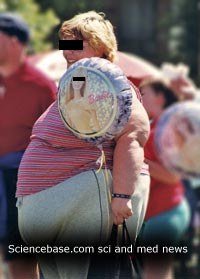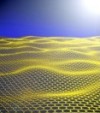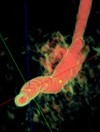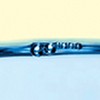 Today’s claims in the media about the recently discovered obesity gene are at best overwrought and at worst downright dangerous. A vast study involving more than twenty research centres across the UK has allegedly demonstrated that almost one fifth of us carry a variant of the gene known as FTO that predisposes us to obesity or overweight.
Today’s claims in the media about the recently discovered obesity gene are at best overwrought and at worst downright dangerous. A vast study involving more than twenty research centres across the UK has allegedly demonstrated that almost one fifth of us carry a variant of the gene known as FTO that predisposes us to obesity or overweight.
According to the researchers, “Obesity is a serious international health problem that increases the risk of several common diseases.” Fair comment. They add that, “The genetic factors predisposing to obesity are poorly understood.” Another fair comment.
They then report that while carrying out a genome-wide search for type 2 diabetes susceptibility genes among 13 groups of almost 40000 participants they have identified a common variant in the FTO gene that predisposes to diabetes through an effect on body mass index (BMI).
Additionally, the team reports that there is a cumulative, or additive, association of the variant with BMI. They found that 16% of the adults with the risky genetics weighed about 3 kilograms more than the others and were almost twice as likely to be obese, when compared to people without the risk allele. Moreover, the team says that they observe this genetic risk factor in individuals age 7 years and older and say that it reflects a specific increase in fat mass.
But, all this talk of obesity being down to genes will provide many individuals with an excuse along the lines of “it’s my glands”, which has become something of a serious cliche for some people who simply refuse to reduce the calorie intake and to add serious amounts of exercise to their daily routine.
The politics of obesity aside, I contacted metabolic expert Jeremy Nicholson of Imperial College London who recently discovered that calorie restriction in dogs extends life, reduces the risk of diabetes and metabolic disorders, and could be due to a change in the behaviour of microbes in the gut. He is less than impressed with the response of the media to the Science paper on FTO. “Basically, no amount of genetics can explain how humans have got fat so fast,” he told me. I would have to agree, genetics has long-term effects one usually does not see major changes in body function and form happening across a single generation.
So, might there be an alternative explanation for the apparent obesity epidemic in the developed world? Nicholson thinks so. “Changes in the gut microbes and caloric bioavailability probably could be the explanation,” he says. If we are suffering severe disturbances in the profile of gut bacteria – either they have changed behaviour or the species have changed – then those heading for overweight or who are already obese could be absorbing far more calories even from the same amount of food because of it.
Liposuction, like Vaser, Smartlipo and laser liposuction is one option, but could a dose of live yogurt or an antibiotic regimen be the solution to obesity? We are only just starting the hors d’heuvre when it comes to understanding the interplay between our bodies and microbes. Much more work into metabolism and the role of the guy microflora needs to be done before we can cast aside obesity as yet another genetic construct and so abandon sufferers to the realm of the untreatable.
Nicholson explains that the microflora in our gut are laid down in infancy and there is not a lot we can do about that. However, he says, “The real secret is eating a lot of beans and pulses (lentils etc) – lots of them every day, they keep the lower gut microbes very happy and the products of their
breakdown (catabolism) do not cause diabetes.” Nicholson laments that the windy side-effects of such a diet are far less malign than the problems associated with a diet deficient in beans and pulses.
Genetics, microbes, and beans aside, Nicholson has what I think has to be the final word on the debate: “Even genes and bugs added together still fade into insignificance if you sit on your butt all day eating pork rinds – you will get fat but its not genetic!”
 Could the claims of the “organic” farming movement be true after all? According to an international team who have analysed the antioxidant, mineral, and nitrate composition of kiwifruit, yes. Their findings published in the Journal of the Science of Food and Agriculture would suggest that growing the fuzzy green fruit using so-called organic principles leads to a higher content of health-promoting factors than those grown using conventional methods.
Could the claims of the “organic” farming movement be true after all? According to an international team who have analysed the antioxidant, mineral, and nitrate composition of kiwifruit, yes. Their findings published in the Journal of the Science of Food and Agriculture would suggest that growing the fuzzy green fruit using so-called organic principles leads to a higher content of health-promoting factors than those grown using conventional methods. Today’s claims in the media about the recently discovered obesity gene are at best overwrought and at worst downright dangerous. A vast study involving more than twenty research centres across the UK has allegedly demonstrated that almost one fifth of us carry a variant of the gene known as FTO that predisposes us to obesity or overweight.
Today’s claims in the media about the recently discovered obesity gene are at best overwrought and at worst downright dangerous. A vast study involving more than twenty research centres across the UK has allegedly demonstrated that almost one fifth of us carry a variant of the gene known as FTO that predisposes us to obesity or overweight. Graphene recently hit the headlines as a potential replacement for silicon in a future world of molecular computing. However, until silicon technology has run its course and arrays of millions of transistors can be carved at will from this material, scientists will have to be content with investigating its properties and devising novel uses.
Graphene recently hit the headlines as a potential replacement for silicon in a future world of molecular computing. However, until silicon technology has run its course and arrays of millions of transistors can be carved at will from this material, scientists will have to be content with investigating its properties and devising novel uses. Do you workout hard? Is “no pain, no gain” your exercise ethos? Do you feel like you are not getting the fitness results you expect? Your brain could be to blame.
Do you workout hard? Is “no pain, no gain” your exercise ethos? Do you feel like you are not getting the fitness results you expect? Your brain could be to blame. Think of MRI and most people think of medical scanning, the kind of analytical tool that can slice through your brain or other organs, virtually speaking, and produce a three-dimensiona view of your innards. But researchers in Canada are putting the magnetic in magnetic resonance imaging to a different. They hope to use it to control tiny robot devices that can be guided through blood vessels in an application reminiscent of 1960s sci-fi movie Fantastic Voyage.
Think of MRI and most people think of medical scanning, the kind of analytical tool that can slice through your brain or other organs, virtually speaking, and produce a three-dimensiona view of your innards. But researchers in Canada are putting the magnetic in magnetic resonance imaging to a different. They hope to use it to control tiny robot devices that can be guided through blood vessels in an application reminiscent of 1960s sci-fi movie Fantastic Voyage. The Alchemist this week discovers how a bodybuilders’ supplement might help treat Parkinson’s disease, the route taken by mercury from groundwater to coast, and how to boost your storage space with fullerenes. Also this week, physical condensation problems solved and how Raman spectroscopy is laying it on thin to help scientists understand carbon sheets. And, this week’s award goes to Perry McCarty for his pioneering work in understanding waste water chemistry and microbiology. Alchemical happenings on ChemWeb
The Alchemist this week discovers how a bodybuilders’ supplement might help treat Parkinson’s disease, the route taken by mercury from groundwater to coast, and how to boost your storage space with fullerenes. Also this week, physical condensation problems solved and how Raman spectroscopy is laying it on thin to help scientists understand carbon sheets. And, this week’s award goes to Perry McCarty for his pioneering work in understanding waste water chemistry and microbiology. Alchemical happenings on ChemWeb The rapid adoption by the car industry of catalytic converters for petrol engines to reduce NOx and other pollutants has significantly improved the quality of air in busy towns and cities. However, Italian scientists says this improvement has comes at a significant price as they are finding rapidly rising levels of heavy metal fallout that could have serious implications for health.
The rapid adoption by the car industry of catalytic converters for petrol engines to reduce NOx and other pollutants has significantly improved the quality of air in busy towns and cities. However, Italian scientists says this improvement has comes at a significant price as they are finding rapidly rising levels of heavy metal fallout that could have serious implications for health. If you are already a user of free chemistry drawing package ACD/ChemSketch but need a little more physical information from your tools than simple structure drawing, then ACD/Labs’ latest freebie might be right up your street. They just released ACD/LogP, which can be used to extract a lipophilicity prediction from your structures with a few mouse clicks.
If you are already a user of free chemistry drawing package ACD/ChemSketch but need a little more physical information from your tools than simple structure drawing, then ACD/Labs’ latest freebie might be right up your street. They just released ACD/LogP, which can be used to extract a lipophilicity prediction from your structures with a few mouse clicks.